What Happens if You Go Back With a Incomplete Mission but Too Damaged to Continue on Silent Hunter 4
Silent Hunter 4
by Neal Stevens
Apr. 7, 2007
![]()
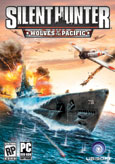 Clear the bridge! Dive! Dive! But close the hatches first, ok?
Clear the bridge! Dive! Dive! But close the hatches first, ok?
When the United States went to war against Japan immediately after the Dec. 7, 1941 attack on Pearl Harbor, the US Navy wasn't ready. Its submarines were commanded by peacetime skippers, many who did not have the stomach for combat; and with torpedoes that had serious bugs. The irony will not be lost on the hordes of subsim skippers clamoring for the newly-released Silent Hunter 4. Ubisoft retooled the critically-acclaimed U-boat sim Silent Hunter III, moving the area of operations from the convoy battles of the Atlantic to the island-studded waters of the Pacific, rebuilding the graphics engine and adding in a batch of new features, going from green light to release in less than a year. As a consequence of the abbreviated development cycle, Ubisoft's flagship simulation is less polished than its predecessor and has a number of bugs and glitches that could turn away some subsim skippers (who don't have a stomach for combat). However, in keeping with the naval analogy, just as the US Bureau of Ordinance corrected bugs with the torpedoes, the crack Romanian developers have released one patch and are working on a second patch that promises to knock out many of the top complaints as this review is being written.
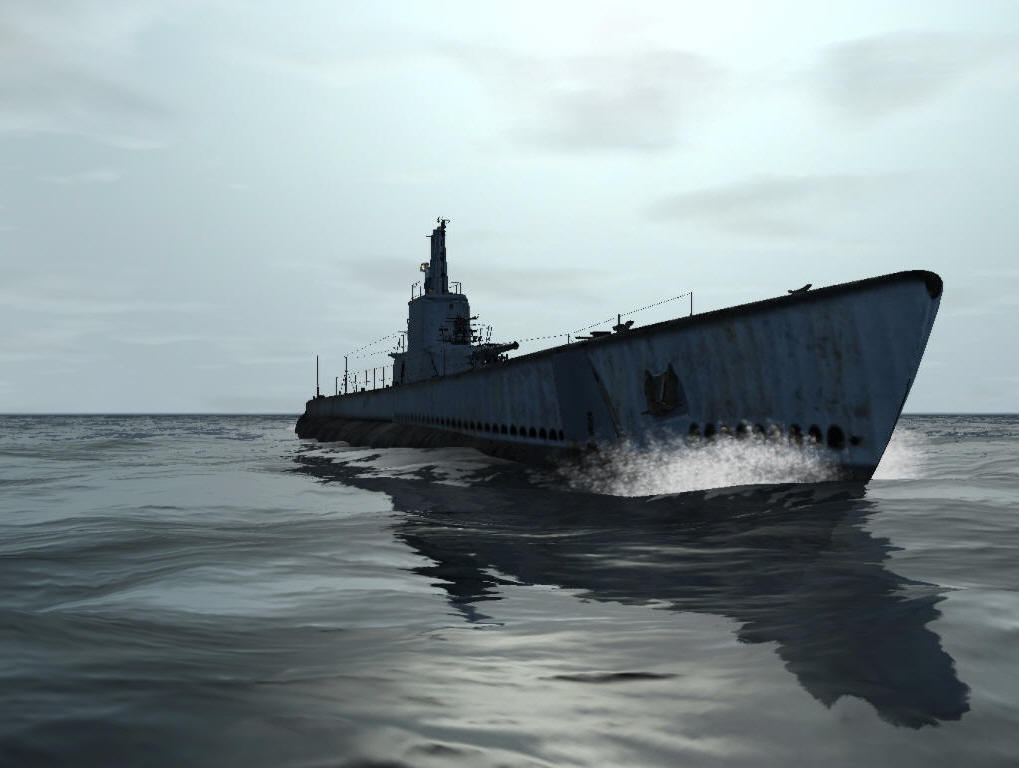 Silent Hunter 4 comes packaged in a variety of ways; there is the US version with bonus materials
Silent Hunter 4 comes packaged in a variety of ways; there is the US version with bonus materials (large Pacific theater map, perfect for framing), a ship recognition map (make room on the wall for this, too!), a keyboard foldout, historical DVD, and a slim manual (more on this later). There is also a European version
and a UK Collector's Edition, a fantastic ensemble of, as Drebbel put it, "goodies you don't really need but they are nice to have". This version is packed in a weathered intel folder with a patch (a cloth patch, let me assure you), pen, coin, journal, spiral-bound ship recognition booklet, and historical footage. Finally, there's the Deluxe Collector's Edition, which was limited to 3000 copies and came in a neat little tin box, raised rivets and all. It's nice to see a simulation receive this kind of treatment.
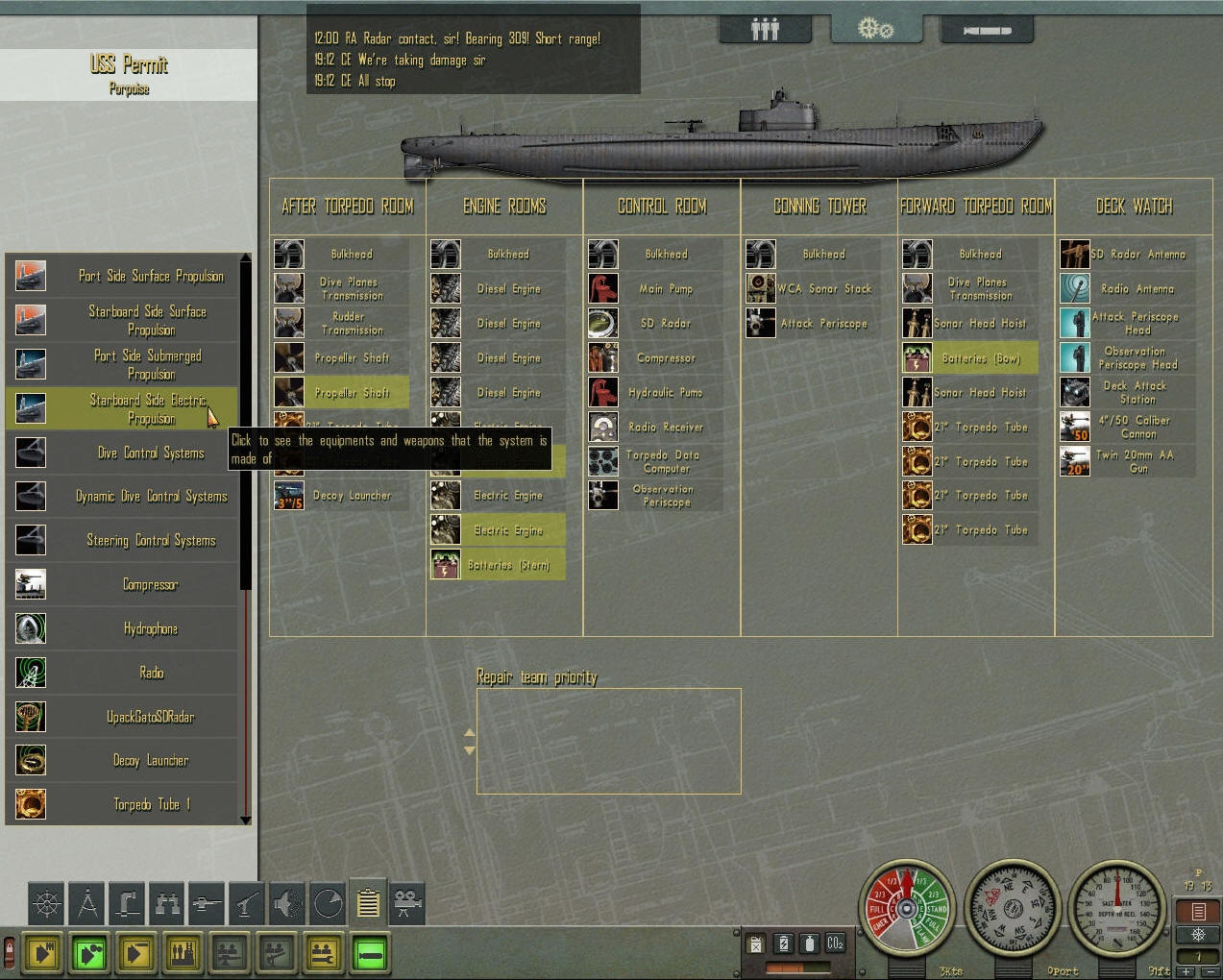 The game itself has been touted by Ubisoft as the subsim with "Hollywood blockbuster experience" in an attempt to appeal to action game buyers and non-simulation players. While this is a smart goal (ensures greater sales, brings new subsim skippers into the fold), it is only laudable by Subsim if it does not come at the expense of historical and simulation accuracy. You can breathe a sigh of relief, Silent Hunter 4 is as hardcore simulation as they come. In fact, many elements are taken a step further than SH3. For example, the damage control links different pieces of gear together in systems and is more specialized. Now instead of an overall hull integrity percent, each compartment has a hull section that can be damaged locally, requiring you to allocate your repair resources carefully. Whereas in SH3 your repairs were superficial and only took minutes to complete, in SH4 things are very different. Anyone who takes a direct hit from a string of Japanese depth charges should not be surprised to see the hull breached in multiple compartments and flooding quickly overwhelm the repair team. People, depth charges kill, let's not forget that.
The game itself has been touted by Ubisoft as the subsim with "Hollywood blockbuster experience" in an attempt to appeal to action game buyers and non-simulation players. While this is a smart goal (ensures greater sales, brings new subsim skippers into the fold), it is only laudable by Subsim if it does not come at the expense of historical and simulation accuracy. You can breathe a sigh of relief, Silent Hunter 4 is as hardcore simulation as they come. In fact, many elements are taken a step further than SH3. For example, the damage control links different pieces of gear together in systems and is more specialized. Now instead of an overall hull integrity percent, each compartment has a hull section that can be damaged locally, requiring you to allocate your repair resources carefully. Whereas in SH3 your repairs were superficial and only took minutes to complete, in SH4 things are very different. Anyone who takes a direct hit from a string of Japanese depth charges should not be surprised to see the hull breached in multiple compartments and flooding quickly overwhelm the repair team. People, depth charges kill, let's not forget that.

 Another area where SH4 raises the bar is harbor activity. In SH3, your German and English ports had meticulously designed docks, lighthouses, and buildings, and the German ports even had people and send-off committees, but not other vessels. Silent Hunter 4 ports are alive with planes, patrol craft, anchored carriers and battleships, and soldiers and sailors. Although you only spend a scant amount of the game time in port, these are essential elements of the total immersion factor that a good simulation will include.
Another area where SH4 raises the bar is harbor activity. In SH3, your German and English ports had meticulously designed docks, lighthouses, and buildings, and the German ports even had people and send-off committees, but not other vessels. Silent Hunter 4 ports are alive with planes, patrol craft, anchored carriers and battleships, and soldiers and sailors. Although you only spend a scant amount of the game time in port, these are essential elements of the total immersion factor that a good simulation will include. 
Coming back to Ubisoft's obvious goal of appealing to the newbie subsim skippers, they shot themselves in the foot--both feet--with a sparse set of tutorial missions and a shockingly incomplete manual. There is a menu option called "Submarine School", but it is more like a practice sandbox. Four missions with some pregame tips and a few ingame messages are all that serve to get the new guy out to sea. They cover basic helm and navigation, AA and deck gun use, a setup torpedo attack, and then throw the player into a convoy encounter. This could have, and should have, been better designed to coach a new guy into the genre, offer detailed guidance, instruct and enthuse him, and compel him to play.
 In conjunction with the trial and error tutorials, SH4 has a pathetic excuse for a manual. Half of the 100 pages is comprised of pictures of the different ships in the game (metric measurements, no less), the same pictures that come on the bonus poster and in SH4's ingame ID book. The few pages that deal with the game features and interface are very generic lists of the buttons and settings in the game but not much about how to use them or what they do. Several keys bits of information are missing, such as how to direct the sonar heads (HOME and END keys) and how to tweak the realism options mid-career (look for a book in the HQ office). Thankfully, there are ten good pages of key details on using the TDC and conducting torpedo attacks. I'm not a stickler for 400 page manuals--a 90 page volume will do just fine as long as it covers the game functions and tactics accurately and in detail. Those two aspects really defeat Ubisoft's purpose of trying to capture the "casual" gamer with Hollywood effects and visuals.
In conjunction with the trial and error tutorials, SH4 has a pathetic excuse for a manual. Half of the 100 pages is comprised of pictures of the different ships in the game (metric measurements, no less), the same pictures that come on the bonus poster and in SH4's ingame ID book. The few pages that deal with the game features and interface are very generic lists of the buttons and settings in the game but not much about how to use them or what they do. Several keys bits of information are missing, such as how to direct the sonar heads (HOME and END keys) and how to tweak the realism options mid-career (look for a book in the HQ office). Thankfully, there are ten good pages of key details on using the TDC and conducting torpedo attacks. I'm not a stickler for 400 page manuals--a 90 page volume will do just fine as long as it covers the game functions and tactics accurately and in detail. Those two aspects really defeat Ubisoft's purpose of trying to capture the "casual" gamer with Hollywood effects and visuals.
 You can stop holding your nose now. The game comes with ten Quick Missions and five War Patrol missions. The Quick Missions are historical battles--Battle of Midway, Battle of the Philippine Sea, that sort--quite well done, that serve as instant action encounters. The War Patrols are a little more open-ended. The player is given an historical objective such as locating and attacking a crippled aircraft carrier or interceding in a Japanese invasion. These are scripted missions designed to present the player to the grand set-piece naval battles that one won't find in a U-boat sim. When the Japanese assemble a task force, it is a formidable challenge. Carriers, cruisers, battleships, destroyers, and combat air cover, all parading straight at the player. It's impossible not to get excited and enjoy. There is no random mission generator with SH4 but the game folder does include a mission editor (no documentation, alas) so the community can provide players with an infinite supply of new single missions.
You can stop holding your nose now. The game comes with ten Quick Missions and five War Patrol missions. The Quick Missions are historical battles--Battle of Midway, Battle of the Philippine Sea, that sort--quite well done, that serve as instant action encounters. The War Patrols are a little more open-ended. The player is given an historical objective such as locating and attacking a crippled aircraft carrier or interceding in a Japanese invasion. These are scripted missions designed to present the player to the grand set-piece naval battles that one won't find in a U-boat sim. When the Japanese assemble a task force, it is a formidable challenge. Carriers, cruisers, battleships, destroyers, and combat air cover, all parading straight at the player. It's impossible not to get excited and enjoy. There is no random mission generator with SH4 but the game folder does include a mission editor (no documentation, alas) so the community can provide players with an infinite supply of new single missions.
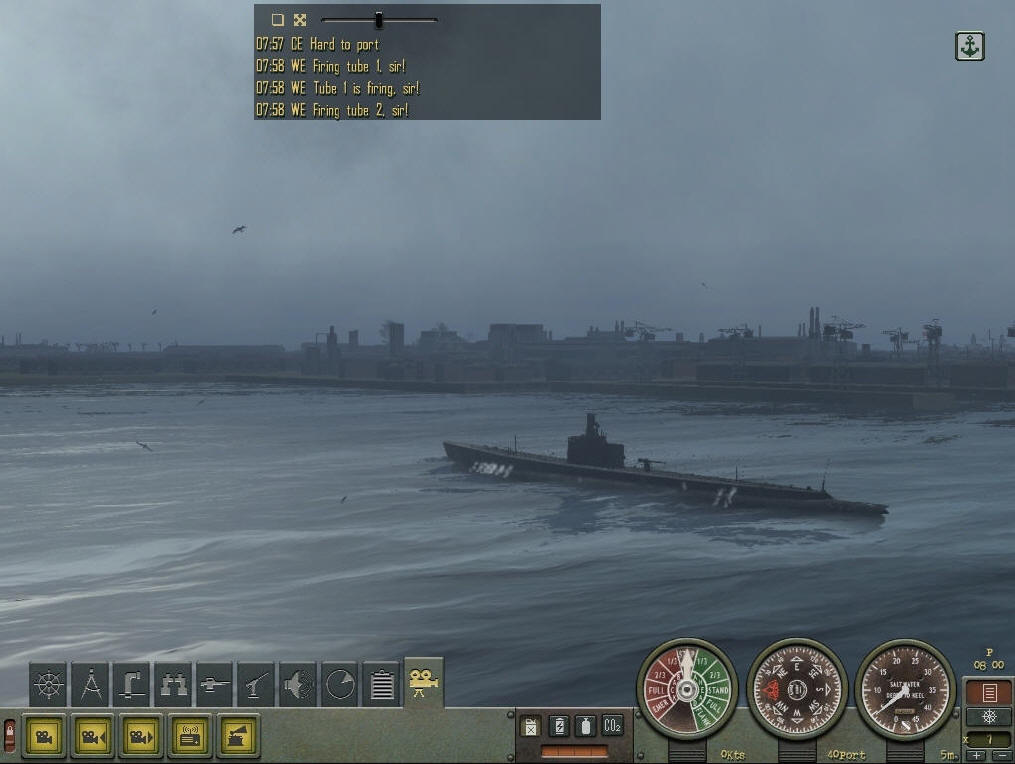 The dynamic campaign that held up release of SH3 for eight months and assured its loving acceptance by rivetcounters everywhere is back with Silent Hunter 4, enhanced with special mission objectives such as inserting a spy or commando team into enemy territory, rescuing downed pilots, and being assigned area observation duties. Of course, there's always the standing order of unrestricted submarine warfare to gleefully participate in. A skipper may decide to achieve the objectives given to him by COMSUBPAC or he can exercise his
The dynamic campaign that held up release of SH3 for eight months and assured its loving acceptance by rivetcounters everywhere is back with Silent Hunter 4, enhanced with special mission objectives such as inserting a spy or commando team into enemy territory, rescuing downed pilots, and being assigned area observation duties. Of course, there's always the standing order of unrestricted submarine warfare to gleefully participate in. A skipper may decide to achieve the objectives given to him by COMSUBPAC or he can exercise his  seasoned judgment and go after reported ship and convoy sightings. You are free to range all over the Pacific and you will find historically accurate shipping throughout the region. Keep in mind the vast distances involved; even with a fleet boat's considerable range and careful husbandry of your fuel, you can refit and top off at any friendly port. If you find that a hindrance, there is an option for "unlimited fuel". The time compression scheme has been beefed up to allow players to zip across the ocean at up to 8000x, and does a better job than SH3 of dropping to 1x when you come in contact with an enemy ship or plane.
seasoned judgment and go after reported ship and convoy sightings. You are free to range all over the Pacific and you will find historically accurate shipping throughout the region. Keep in mind the vast distances involved; even with a fleet boat's considerable range and careful husbandry of your fuel, you can refit and top off at any friendly port. If you find that a hindrance, there is an option for "unlimited fuel". The time compression scheme has been beefed up to allow players to zip across the ocean at up to 8000x, and does a better job than SH3 of dropping to 1x when you come in contact with an enemy ship or plane.
Radio traffic is greatly improved over SH3 with the player getting numerous broadcasts, domestic and war news, and transmissions from HQ. The campaign begins the day after Pearl Harbor was attacked and does not show any indication of the battle. Would I be surprised if this was fixed later? No, but it would have been the perfect scene setting to kick off the otherwise terrific dynamic career mode. In any case, the SH4 career mode will provide months of interesting and diverse gameplay.
 Submarine warfare in the Pacific was vastly different from the Battle of the Atlantic. U-boats fought mainly in the featureless expanses of the Atlantic. US subs took the fight to the enemy's front door. Thousands of reefs, shoals, and islands dot the map, adding abundant tactical opportunities for chasing ships and plotting intercepts. Enemy sightings are relayed to the player and also updated on the map. Thankfully, the devs made the interception of reported contacts a bit more challenging that simply laying a straight waypoint to the indicated position on the map and driving right over. Reported contacts age and the actual vessels continue on their course, which may or may not be the same course they were on when the report was logged. The frequency of new contacts is very reminiscent of the original Silent Hunter.
Submarine warfare in the Pacific was vastly different from the Battle of the Atlantic. U-boats fought mainly in the featureless expanses of the Atlantic. US subs took the fight to the enemy's front door. Thousands of reefs, shoals, and islands dot the map, adding abundant tactical opportunities for chasing ships and plotting intercepts. Enemy sightings are relayed to the player and also updated on the map. Thankfully, the devs made the interception of reported contacts a bit more challenging that simply laying a straight waypoint to the indicated position on the map and driving right over. Reported contacts age and the actual vessels continue on their course, which may or may not be the same course they were on when the report was logged. The frequency of new contacts is very reminiscent of the original Silent Hunter.
For veterans of Silent Hunter 2 and 3, the SH4 interface and game functions will be easy to grasp. The traditional sub game toolbar hasn't changed that much from Aces of the Deep. The player can access different parts of the game without having to switch stations, not that different from the SH3 tool bar. One may send the crew to battlestations, check the depth under keel, and order the sonar man to report contacts, from any station. The game caused a lot of head-scratching when it was shipped with readouts in metric units (a US sub with a periscope depth of 15 meters ?...); the v1.1 patch added in support for Imperial measurement units (though the ship ID book is still metric). It feels so much better to take her down to 300 feet, instead of 300 meters.
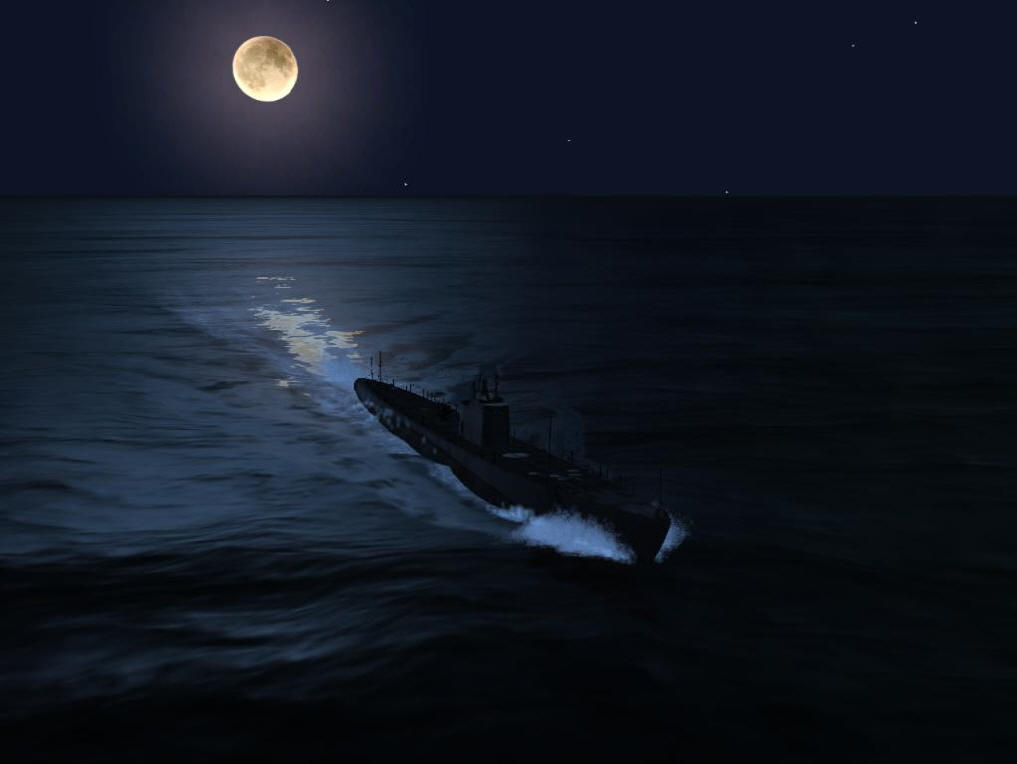


Part of the allure of a subsim is the dynamic campaign and the sense of adventure, not knowing what is over the horizon, and SH4 admirably achieves this. Another major element of a submarine simulation, as opposed to a naval game , is the actual mechanics the player may use during gameplay. Silent Hunter 4 does a pretty good job in this department, too. The game has a commendable set of realism options that allow the player to decide if he wants to play SH4 as an action-oriented game  or a highly detailed simulation, requiring (and rewarding) patience. Three notable options are the auto/manual TDC, realistic sensors, and map contact updates. Choose the automatic Torpedo Data Computer setting and the player can lock on and shoot with no exacting trigonometry setup. If you decide to play with manual TDC, you are required to ID the enemy ships, set their angle on the bow and range (with an excellent reproduction of a stadimeter), and estimate target speed. You will not score as many hits this way but it is a very gratifying experience when you do.
or a highly detailed simulation, requiring (and rewarding) patience. Three notable options are the auto/manual TDC, realistic sensors, and map contact updates. Choose the automatic Torpedo Data Computer setting and the player can lock on and shoot with no exacting trigonometry setup. If you decide to play with manual TDC, you are required to ID the enemy ships, set their angle on the bow and range (with an excellent reproduction of a stadimeter), and estimate target speed. You will not score as many hits this way but it is a very gratifying experience when you do.
With the realistic sensors option turned on, you are limited to historical abilities to detect ships. The ocean is a big place and WWII-era ships, even with radar, could only detect other ships at limited range. Anything more than 50 miles away was as good as 500 miles away, you would never know it's there. With the realistic sensors option off, you come across more targets and you can sink more stuff with less hunting required. Last, the map contact updates option gives the player the choice of having all ships and planes updated on the map for him with a God's-eye ability to watch the battle. Playing with the map contact updates option off hands the player a blank map, requiring him to take sightings and use the good set of map tools provided to plot all contacts on the map himself. Without these three critical options, it wouldn't matter if the screws turn the wrong way or if the sub's battery capacity was off, the player would be forced to play the simulation as a game. Bravo, Romanian devs!
 There will always be bugs in games but Ubisoft pushed this title out too soon. Even discounting the minor glitches that do not affect gameplay, there are numerous bugs and missing features with the 1.0 version. SH4 did not get sufficient development time or QA testing, not by a long stretch. US subs at the start of WWII were sent to battle with ineffective torpedoes that ran deep or failed to explode, even exploded prematurely. It's ironic that SH4 skippers who set out to sink IJN ships in the first days since the war began, er, since the game was released, found their torpedoes frequently missing astern. Turns out there is a bug affecting the actual speed of torpedoes set at high speed. You may set the torpedo to high speed, the TDC thinks the torpedo is going to run at high speed and adjusts the solution accordingly, but the torpedo has other ideas and moseys along at low speed, missing the target and having SH4 skippers scratching their heads (and cursing, lots of cursing) with a taste of the frustration that real skippers must have felt. The devs have fixed this and normal operations will resume with patch 1.2 soon.
There will always be bugs in games but Ubisoft pushed this title out too soon. Even discounting the minor glitches that do not affect gameplay, there are numerous bugs and missing features with the 1.0 version. SH4 did not get sufficient development time or QA testing, not by a long stretch. US subs at the start of WWII were sent to battle with ineffective torpedoes that ran deep or failed to explode, even exploded prematurely. It's ironic that SH4 skippers who set out to sink IJN ships in the first days since the war began, er, since the game was released, found their torpedoes frequently missing astern. Turns out there is a bug affecting the actual speed of torpedoes set at high speed. You may set the torpedo to high speed, the TDC thinks the torpedo is going to run at high speed and adjusts the solution accordingly, but the torpedo has other ideas and moseys along at low speed, missing the target and having SH4 skippers scratching their heads (and cursing, lots of cursing) with a taste of the frustration that real skippers must have felt. The devs have fixed this and normal operations will resume with patch 1.2 soon.
In addition to the torpedo speed bug, there are a few other notable glitches to list. The TDC locks when approaching a target in a certain fashion. Flooding damage control needs some adjustments. The SD aircraft radar picks up surface contacts. After patch v1.1, the A key invokes an immediate CTD. After a long patrol, the message clipboard will cause the game to pause for several seconds to 30 seconds while the game retrieves it. Also, some players have reported a chronic crew illness problem, where an injured crewmember slowly loses health until he dies. Intel suggests these have been noted by the dev team and targeted for correction, so SH4 players, don't give up the ship.
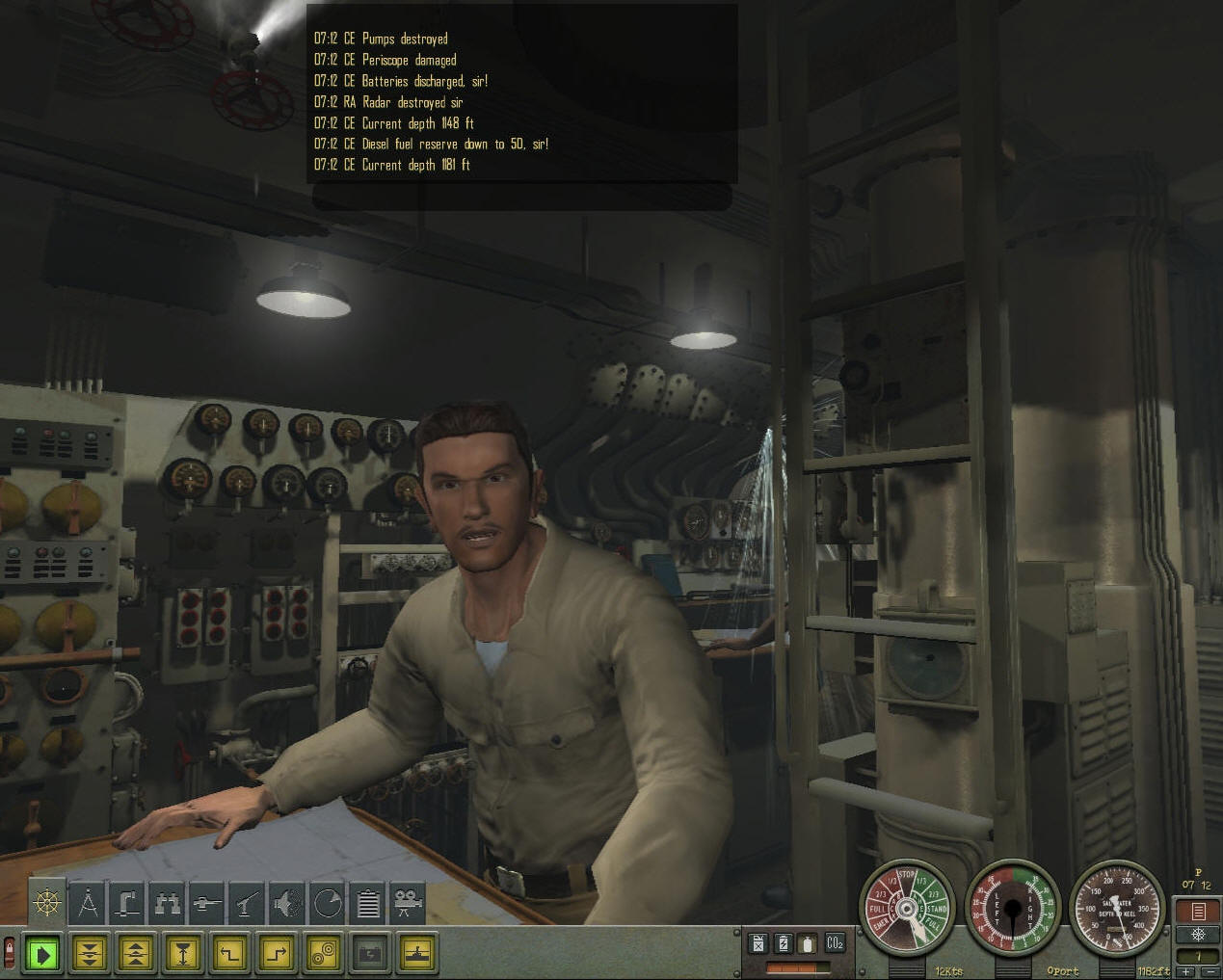
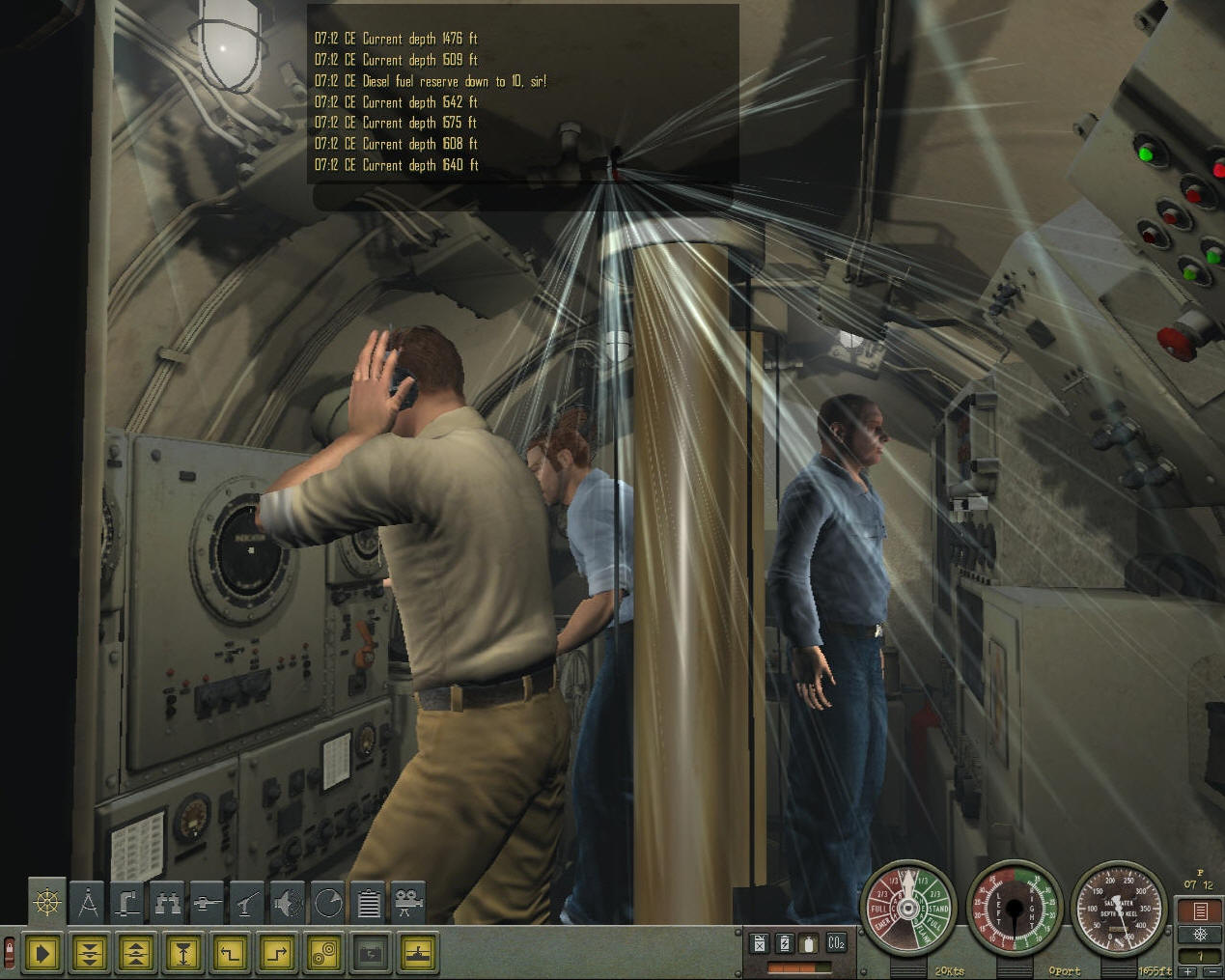
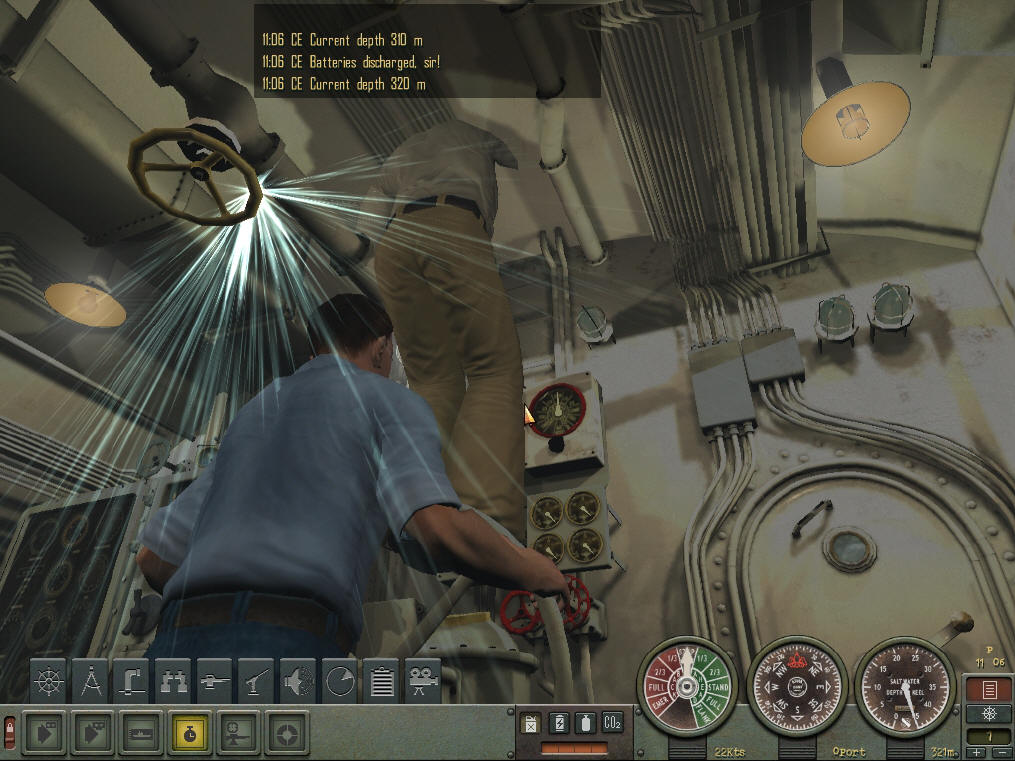
Finally, there is no ingame assist to determine the target's speed. In SH3 you had a stopwatch that you were required to run for a while, and you were given an approximate speed. Additionally, you could "ask" the Weapons Officer and he would give you the target's speed, with exacting precision. There is no Weapons Officer in SH4, I assume he got his own sub to command, since he was better than most players at determining a target's speed and range. You can use several methods to estimate the target speed but many players want to perform a small function like in SH3 where they could click the watch and have an estimate given to them, and I concur. It gives the player more to do and replicates the actual task of timing the time over distance calculation. In addition to the aforementioned shortcomings, this is probably the last significant need for SH4.
| Engaging the enemy allows the player to enjoy all the simulation aspects so carefully built into SH4. Enemy convoys and escorts behave as they should, for the most part. Convoys employ zig-zag patterns with escorts in expected positions. | SH4: Bugs of the Pacific? You have to go to war with the game you have, not the game you want. Funny, that a French game publisher would adhere to a Rumsfeldian adage. With three additional months of development and a decent manual, this could have easily been a magnificent simulation. Still, unfinished games with bugs are not new to the computer game industry and this article reviews the game, not just the glitches. Is the glass half-empty? Or half-full? Either way, when you're thirsty, there's water to be had in that glass. Submarine sim players know how many titles there are to choose from and anyone who lets a few flaws stop them from putting to sea in Silent Hunter 4 deserves to be left at the dock. Sure, there are bugs but that does not mean the game isn't good--overall, it is quite good and most of the players I have been in contact with are thrilled with it. There is a lot of good subsim experience to love here. The US sub skippers this game is based on managed to overcome a rocky start and claim honor and glory. If Ubisoft will let the devs finish the job, Silent Hunter 4 could sail to victory. |
I have seen examples of AI ships getting in each other's way and slowing to a crawl, or one will slow and reverse course to avoid contact like bashful bumper cars, which indicates the "evasion/collision" AI needs tuning. Likewise the harbor-bound ships should be more responsive to any player intrusions.
Escorts are aggressive and tenacious but not endowed with super powers. I played through the same mission 14 times to evaluate the efficiency and genuineness of destroyer AI. If the player behaves as a real sub skipper would, he is rewarded with lifelike outcomes. Thermal layers and silent running will permit an SH4 player to avoid direct hits from most depth charge attacks, and give him a great chance of slipping away. In one test, I found that if you get 1500 yards (or is it meters? God, I hope it's yards) away from a pack of DDs who are pounding your last known position, and you go to full speed and raise the scope, they will detect you and rush right over to say howdy, in that peculiar Japanese way, with depth charges.
 The Silent Hunter 4 world is teeming with numerous ships, from sampans to IJN warships and planes, including 18 different types of carriers, battleships, and cruisers, 9 types of escort ships, and over 18 types of merchants, freighters, tankers, and assorted marus. Each ship practically bursts with minute details, from railings, cargo, planes, multiple decks, and gritty textures. Unfortunately, AI Japanese and US subs are absent, meaning you will never have to fear being caught unaware and torpedoed by the enemy. (Or are they? Two Japanese subs appear in the game list. So far, I've had no interaction with them.) The player's flotilla includes six US submarines, from the obsolete S-class pigboats, to the Tambor, Porpoise, Gato, and Balao class fleet boats.
The Silent Hunter 4 world is teeming with numerous ships, from sampans to IJN warships and planes, including 18 different types of carriers, battleships, and cruisers, 9 types of escort ships, and over 18 types of merchants, freighters, tankers, and assorted marus. Each ship practically bursts with minute details, from railings, cargo, planes, multiple decks, and gritty textures. Unfortunately, AI Japanese and US subs are absent, meaning you will never have to fear being caught unaware and torpedoed by the enemy. (Or are they? Two Japanese subs appear in the game list. So far, I've had no interaction with them.) The player's flotilla includes six US submarines, from the obsolete S-class pigboats, to the Tambor, Porpoise, Gato, and Balao class fleet boats.
 There has never been a subsim that looks this good. Silent Hunter 4 is truly a thing of beauty when run at the game's native resolution. SH3 broke new ground in the graphics area and SH4 continues to close the gap between game graphics and photo-realism. The clear Pacific ocean allows the player to see a few feet beneath the surface and underwater views have a distinctive shimmer and distortion, with algae floating by the rocks and seaweeds. Ships, subs, and the ocean look alive with new "postprocessing" effects and lighting effects. The graphics are very scalable so players on the lower end of the PC spec foodchain can turn off some or most options and still enjoy a smooth game. Even with the effects and textures scaled back, SH4 is stunning. It's a great world when one can play a game like Silent Hunter 4 and just enjoy the view of a sunset and shimmering waves from the bridge of a Gato class sub.
There has never been a subsim that looks this good. Silent Hunter 4 is truly a thing of beauty when run at the game's native resolution. SH3 broke new ground in the graphics area and SH4 continues to close the gap between game graphics and photo-realism. The clear Pacific ocean allows the player to see a few feet beneath the surface and underwater views have a distinctive shimmer and distortion, with algae floating by the rocks and seaweeds. Ships, subs, and the ocean look alive with new "postprocessing" effects and lighting effects. The graphics are very scalable so players on the lower end of the PC spec foodchain can turn off some or most options and still enjoy a smooth game. Even with the effects and textures scaled back, SH4 is stunning. It's a great world when one can play a game like Silent Hunter 4 and just enjoy the view of a sunset and shimmering waves from the bridge of a Gato class sub.
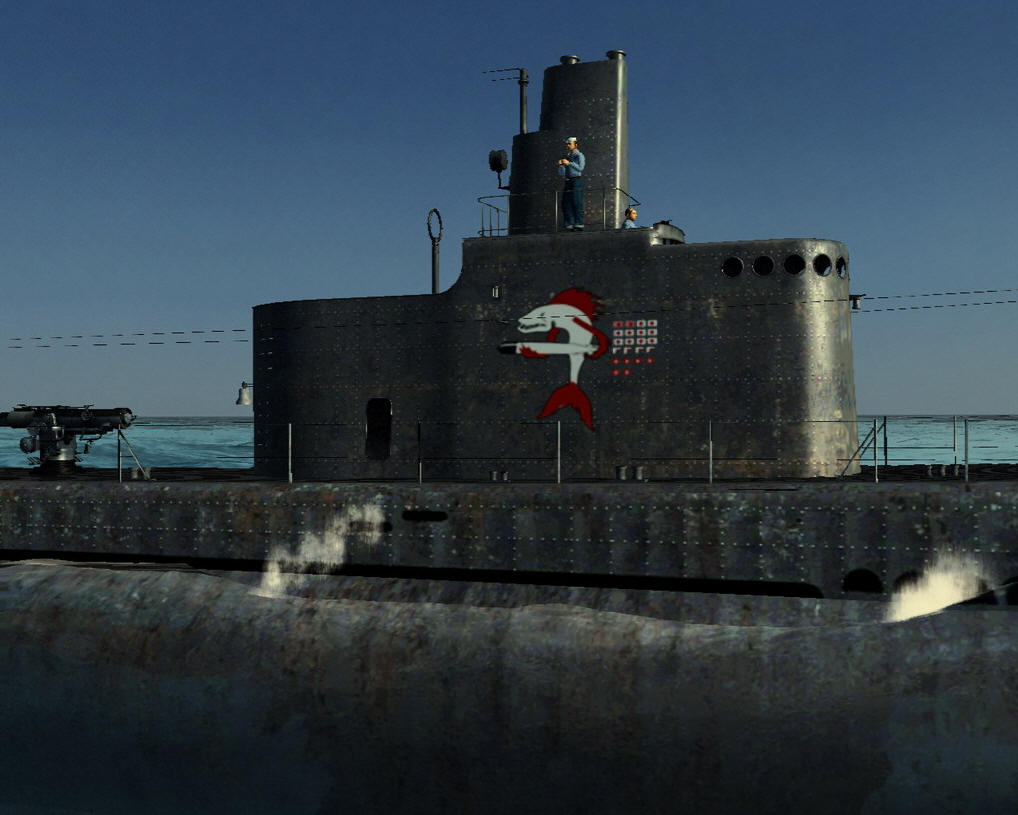


 There's more to "how good" a game looks than particle density and polygon counts. The motion and physical behavior impact how real a game looks and SH4 pours it on, putting the player in a virtual world we could have only dreamed of with SH1. Everything looks great, moves great, feels great. When you execute a sharp course change, you lose a little speed until the sub gets straightened up on the new course. Torpedo impacts and explosions (which cause the victim to throw off chunks of the ship and cargo, including planes in breathtaking arcs) have the just the right timing and motion. Your torpedo and deck guns now have more visual effect than the black smudges we are accustomed to in SH2 and 3; now the target will take 3D damage--gaping holes that allow you to peer inside the guts of the target. As with SH3, ships sink in a wonderful variety of ways--bows blown off, broken in two, rolling over keel up, the sudden lift of the stern and plunge to the bottom.
There's more to "how good" a game looks than particle density and polygon counts. The motion and physical behavior impact how real a game looks and SH4 pours it on, putting the player in a virtual world we could have only dreamed of with SH1. Everything looks great, moves great, feels great. When you execute a sharp course change, you lose a little speed until the sub gets straightened up on the new course. Torpedo impacts and explosions (which cause the victim to throw off chunks of the ship and cargo, including planes in breathtaking arcs) have the just the right timing and motion. Your torpedo and deck guns now have more visual effect than the black smudges we are accustomed to in SH2 and 3; now the target will take 3D damage--gaping holes that allow you to peer inside the guts of the target. As with SH3, ships sink in a wonderful variety of ways--bows blown off, broken in two, rolling over keel up, the sudden lift of the stern and plunge to the bottom.
Ships are dotted with small sailors and officer, manning guns, depth charge racks, and keeping watch. For the first time, life boats are launched when a ship goes down. I would describe the effect machine gun fire has on them but according to the Geneva Convention, I'm not allowed to do that.
I should qualify the praise of SH4's visual appeal; I run the game on a 19" Samsung 931B LCD monitor, and I have nothing but love for it. Upon release, it was determined SH4 locked the resolution at 1024x768 and did not allow anti-aliasing, drawing the ire of upscale players with large monitors. Some said the game looks fine, others were not happy with it. I have a suspicion this will be fixed in patch 1.2.

 The sound effects seem to borrow heavily from the SH3 catalogue. No complaints here, the SH3 sound effects were top-notch and a hatch closing on a German sub sounds like a hatch closing on a US sub. Better to use what works than change for the sake of change and screw something up. The crew voices sound authentic and vary between urgent shouts and wary whispers, depending on this combat situation, a big plus for immersion. Numerous audio effects such as the hull creaking, waves lapping on the side of your sub, screws heard from the hydrophone station, howling winds of typhoon sea states, and the subtle clicking of the TDC dials all bring the player deeply into the Silent Hunter 4 world. I especially liked the destroyer's pinging sounds, which varies in pitch and frequency depending on their combat situation--I got goosebumps the first time I heard them switch to short range pinging. Upon initial release, Silent Hunter 4 was missing a few key sound effects and crew reports. The v1.1 patch fixed most if not all of them, adding verbal confirmation of torpedo firing and damage reports, among others. Once again, the score is well-done, worthy of special mention.
The sound effects seem to borrow heavily from the SH3 catalogue. No complaints here, the SH3 sound effects were top-notch and a hatch closing on a German sub sounds like a hatch closing on a US sub. Better to use what works than change for the sake of change and screw something up. The crew voices sound authentic and vary between urgent shouts and wary whispers, depending on this combat situation, a big plus for immersion. Numerous audio effects such as the hull creaking, waves lapping on the side of your sub, screws heard from the hydrophone station, howling winds of typhoon sea states, and the subtle clicking of the TDC dials all bring the player deeply into the Silent Hunter 4 world. I especially liked the destroyer's pinging sounds, which varies in pitch and frequency depending on their combat situation--I got goosebumps the first time I heard them switch to short range pinging. Upon initial release, Silent Hunter 4 was missing a few key sound effects and crew reports. The v1.1 patch fixed most if not all of them, adding verbal confirmation of torpedo firing and damage reports, among others. Once again, the score is well-done, worthy of special mention.
If you decide you want to wolfpack with fellow SH4 players, the game officially supports up to 4 on Ubi.com and 8 on LAN. Using Hamachi, I have been in 8-man Internet battles and the game stability is good and essentially lag-free. SH4 adds an adversarial mode where the host can play as the Convoy Commander, shepherding the merchants and directing escorts against the opposing sub players. I've played a couple sessions as the CC and learned that my single player realism settings (92% realism) overrode the MP realism options. I'm told this will be fixed in the next patch. When corrected, adversarial multiplayer should be very enjoyable. (See also: Scenes from Multiplayer: Silent Hunter 4)
Silent Hunter 4 continues the proud Silent Hunter tradition of scalable simulations rich with gameplay functions and realism for hardcore subsim junkies and fantastic visuals and action for casual gamers. It is saddled with more than a few bugs and was released too early, but there's real muscle to this sim. With great graphics, a standout dynamic campaign, and tons of thoughtful details throughout that add to the ambiance, Silent Hunter 4 is a must-have for intrepid subsim skippers everywhere.
Source: https://www.subsim.com/sh4/silent_hunter4.php
 So many things that worked great in SH3 are back: these include rig for red lighting, a fully functional hydrophone station, attack and observation periscopes, and 3D crews (though not as clickable-interactive as before). They do respond to the player's orders and turn to repeat the orders and nod. The waypoint system works flawlessly. You can set and remove waypoints and the sub follows them. The subs are magnificently modeled. Back in the day of DOS and Windows 95, it was a big deal if the subs, well, just looked like subs. SH4 subs have cables, fittings, deck gratings, antennas, limber holes that stream water, working dive planes that retract and lower, rotating sonar heads...the list is impressive, and each detail makes the whole feel like you are at sea on a US fleet boat.
So many things that worked great in SH3 are back: these include rig for red lighting, a fully functional hydrophone station, attack and observation periscopes, and 3D crews (though not as clickable-interactive as before). They do respond to the player's orders and turn to repeat the orders and nod. The waypoint system works flawlessly. You can set and remove waypoints and the sub follows them. The subs are magnificently modeled. Back in the day of DOS and Windows 95, it was a big deal if the subs, well, just looked like subs. SH4 subs have cables, fittings, deck gratings, antennas, limber holes that stream water, working dive planes that retract and lower, rotating sonar heads...the list is impressive, and each detail makes the whole feel like you are at sea on a US fleet boat.
0 Response to "What Happens if You Go Back With a Incomplete Mission but Too Damaged to Continue on Silent Hunter 4"
Post a Comment